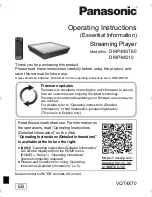
1st edition, 17-09-2020
7000.05070, 1st edition, 17-09-2020
7000.05070
Installation
19
NOTICE!
Damage to battery
In case of an error, an unacceptable charging current (reverse current) can damage the bat-
tery. The UL1642 and IEC60086-4 standards describe recommendations for the safety of lith-
ium batteries.
When selecting the battery, check the dimensions of the integrated resistor R
V1
based
on the maximum permissible reverse current.
If necessary, connect another series resistor R
V2
and/or a D1 diode in series with the bat-
tery.
Install additional protective components (D1, R
V2
) close to the battery.
4.3
Electromagnetic compatibility (EMC)
Follow the instructions in the following chapters and in the technical manual of the
FAULHABER Motion Controller of generation V3.0 to perform an EMC-compliant instal-
lation.
4.3.1
Cable routing
The cable routing depends on various factors, such as:
Is the cable shielded, twisted?
Were interference-reducing measures taken?
What material and what cable routing are used in the cable duct?
Over what surface is the cable routed?
Observe the following when laying the cables:
Use a full-surface, u-shaped and, if possible, metal cable duct.
Lay the cables near the corners of the cable duct.
Separate the cables by function where possible.
Maintain distances when laying the cables.
The distances may vary depending on the zone in the switching cabinet.
If possible, all cables should be twisted pairs or twisted and shielded in function groups
(e.g., motor phases together, encoder cables together).
Fig. 10: Laying in the cable duct
Depending on the type of energy storage and the requirements on the service life,
more complex circuits may be required for battery management.
1
2
3











































